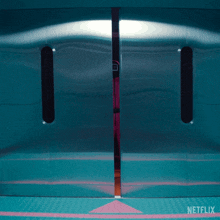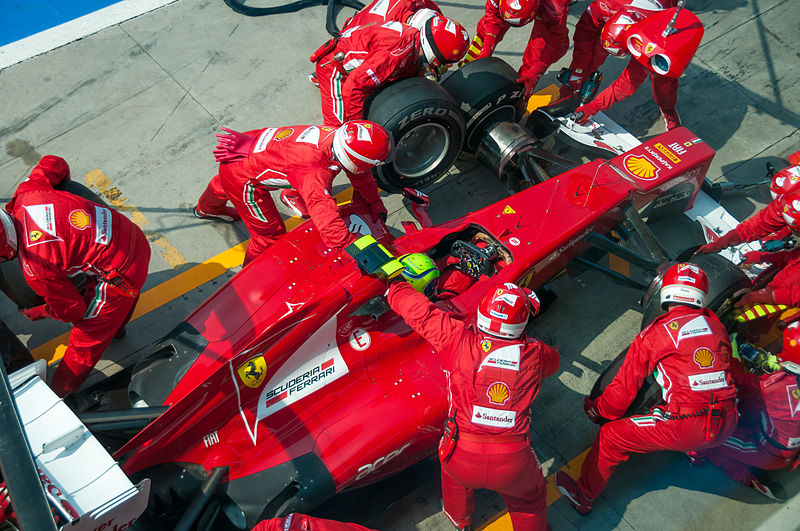Formula 1 comes back for the 2025 season on March 14, at the Albert Park Grand Prix Circuit in Australia. The season will begin with new drivers, new team line ups, but the same thrilling races and exhilarating speed.
This is your in depth, comprehensive guide to Formula 1 for the 2025 season and everything you need to know to dive into it!
Let us slide into your dms 🥰
Get notified of top trending articles like this one every week! (we won't spam you)The Basics
F1 consists of 10 teams with 2 drivers each. They race around the world for points for the World Drivers Championship (WDC) and the World Constructors Championship (WCC). To win the race and earn the most points for that round (each different race/track raced on is called a round), you must finish in first, obviously.
In each race, the drivers collect points and the one with the most points by the end of the season wins the WDC. Now, each team has 2 drivers. The points gained by the two drivers sum up to the WCC, which is the combined points of the two drivers in the team.
The team with the most points wins the WCC. The higher the team places, the more money they get as a prize.
It's important to know points are only given to drivers who finish in the top 10. So places 11-20 don't get any points.
Before the season, teams build the car, which must comply with the rules and regulations set by the FIA, or the Fédération Internationale de l'Automobile, which is the governing body of Formula 1. The teams must try to build the fastest, most aerodynamically efficient car within these regulations to help their drivers win and collect points for WDC and the WCC.

Take the Quiz: Which Squid Game Player Are You?
Ever wondered which player you’d be if you found yourself in the Squid Game universe? Take this quiz to find out which character matches your perso...
Teams and Drivers

Image Credit: Práger Péter from Wikimedia Commons
As already stated, F1 consists of 10 teams with 2 drivers each. This year, for the 2025 season, we have many rookies on the grid starting their F1 journey.
The teams and drivers are:
Alpine: Pierre Gasly and Jack Doohan (rookie)
Aston Martin: Lance Stroll and Fernando Alonso (2x WDC)
Ferrari: Charles Leclerc and Lewis Hamilton (7x WDC)
Haas: Esteban Ocon and Oliver (Ollie) Bearman (rookie)
Kick Sauber (more commonly referred to as Sauber): Nico Hulkenberg and Gabriel Bortoleto (rookie)
McLaren: Lando Norris and Oscar Piastri
This team won the most recent WCC just this previous season, in 2024, after a 26 year long dry spell since their last WCC in 1998.
Mercedes: George Russell and Andrea Kimi Antonelli (more commonly referred to as Kimi) (rookie).
Racing Bulls (more commonly referred to as VCARB because their full name is Visa Cash App Racing Bulls or RB): Isack Hadjar (rookie) and Yuki Tsunoda.
This team is the sister team of Red Bull.
Red Bull Racing (more commonly referred to as just 'Red Bull' or RBR, to differentiate from RB): Max Verstappen (4x WDC) and Liam Lawson (rookie).
Verstappen just received his fourth world championship in 2024.
Williams: Alex Albon and Carlos Sainz.
Race Weekends

Image Credit: Pedrik from Wikimedia Commons
Formula 1 races are almost always held on Sundays, but there are still days leading up to that that involve the car. There are two types of race weekend formats: regular and sprint.
For a regular race weekend, the schedule is set up like this:
Friday: Free Practice 1 (FP1)- 90 mins. During Free practices, drivers get can familiar with the track.
Friday: Free Practice 2 (FP2)- 90 mins.
Saturday- Free Practice 3 (FP3)- 60 mins
Saturday- Qualifying (or 'Quali'). Quali determines where you place on the grid for Sunday's race. The fastest person places in the first position, or pole position, and starts first on the grid for the race on Sunday.
Sunday- Race.
For a sprint weekend, the schedule is set up like this:
Friday- FP1.
Friday- Sprint quali.
Saturday- the Sprint race.
Saturday- regular race quali.
Sunday- Race.
A sprint race is a shorter, 30 minute version of a race without pit stops. For 2025, there are 6 sprint weekends. They will be held in the Shanghai, Miami, Spa-Francorchamps, Austin, Sao Paulo and Lusail tracks. Additionally, for Sprint races, points are only awarded to the top 8 instead of top 10, and the points are smaller.
Tyres, Pitstops, and Strategies

Image Credit: Francesco Crippa from Wikimedia Commons
In F1, different tyres (the British way of spelling tires, and what F1 calls them) are used in different weather and used for different strategies. Pitstops and tyre wear and duration are a huge part of the strategy teams use to get ahead.
There are 5 different types of tyres. These will be explained simply. Hard tyres last longer.
Soft tyres go faster. Medium tyres are a sweet spot of both; it is kind of an in between. Wet tyres are used during wet weather conditions. Intermediate tyres (or 'inters') are used when the track is somewhat wet and somewhat dry.
Pitstops are where teams switch out the tyres in a race. It is required to have one pitstop per race, where they change to a different tyre compound.
This is where strategy comes into play. Choosing which tyres to use and start with, which tyres to change to, and most importantly, when to pit and how many times.
Flags

Image Credit: Steve Gregory from Wikimedia Commons
Flags usually come out during a race when there's an accident and the track is unsafe.
Yellow flag- Basicially a caution flag. It means drivers must slow down and should change their course if needed. This usually comes out when a car goes off the track or when a small incident occurs. A double yellow flag means there is a significant hazard, and drivers need to slow down a lot and should be ready to stop.
Red flag- These are for major incidents and accidents that occur, and the race is immediately stopped.
Formula 1 is such a thrilling and fun sport where you get to really connect with the drivers and teams. The season starts up again in Australia, with FP1 on March 14th, and the first race of the season being held on March 16th. The full schedule for the whole season can be found here.











